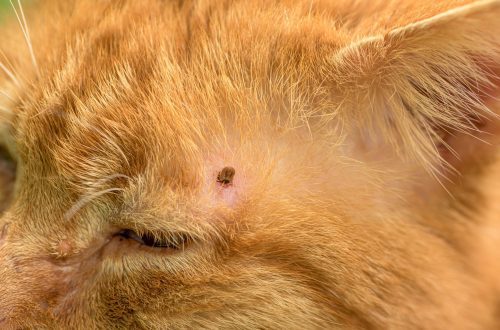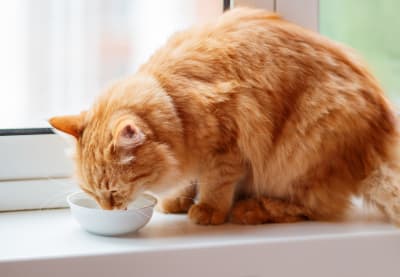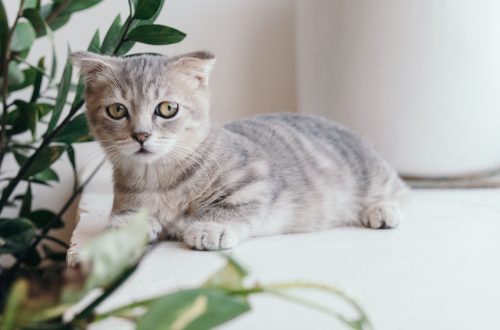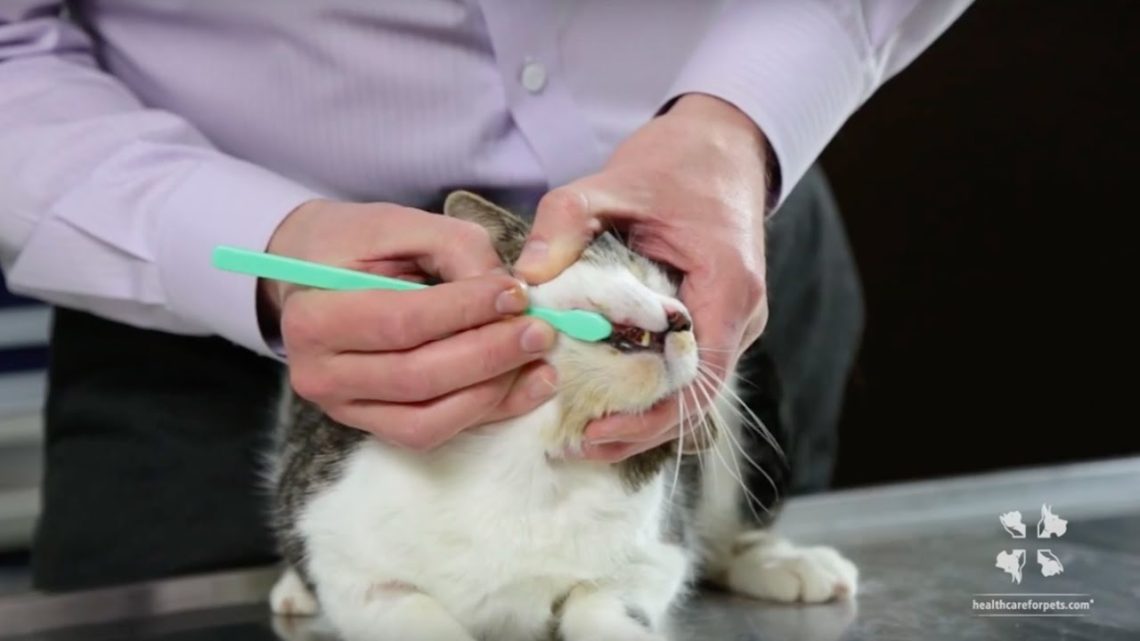
How to brush your cat’s teeth at home?
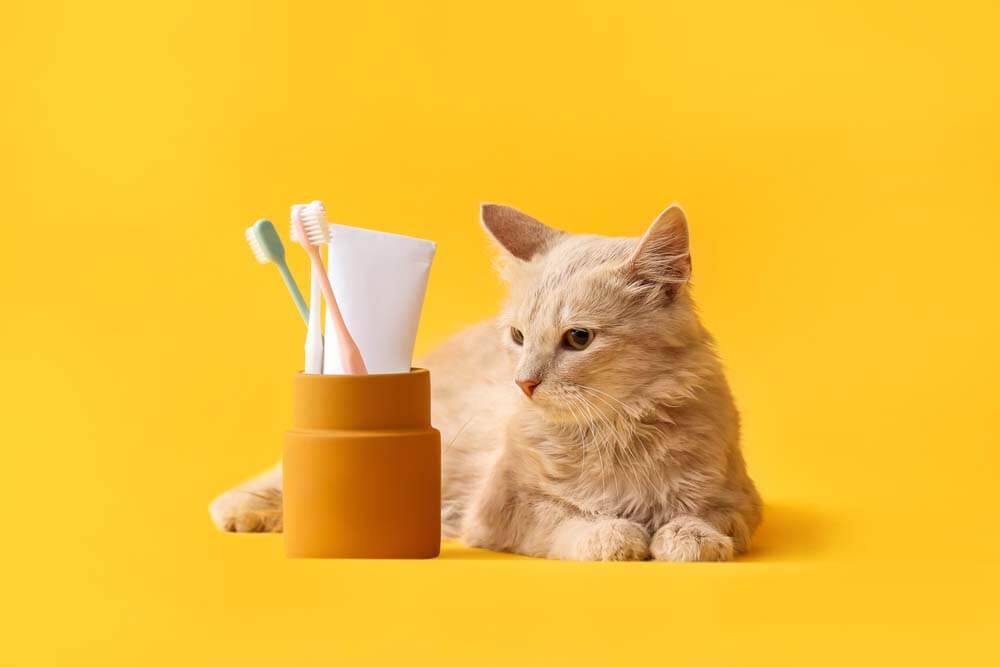
Contents
- Do cats need to brush their teeth at all?
- How to brush your cat’s teeth at home
- Preparing for cleaning
- How to properly brush your cat’s teeth – instructions
- Additional hygiene products
- Why not brush your teeth?
- How often should a cat’s teeth be brushed?
- Cleaning in veterinary clinics
- How to care for your cat’s teeth
- Brushing your cat’s teeth is essential
- Answers to frequently asked questions
Do cats need to brush their teeth at all?
Healthy teeth are not only the ability to chew food well, but also an important component of the general well-being of a cat. Serious dental pathologies affect the entire body. They are a source of chronic bacterial inflammation, pain. There is also a possibility of the process spreading beyond the oral cavity – into the nasal passages, eyes, and sometimes even into the hearing organs.
Plaque is formed as a result of the vital activity of bacteria.
Gradually, from loose and soft, it becomes hard and turns into tartar.
To prevent this pathological process, it is important to pay regular attention to the pet’s oral cavity, including brushing the cat’s teeth.
The change of teeth in a kitten from temporary to permanent begins at the age of 3-4 months and usually ends by 7 months.
It is not necessary to brush temporary teeth for a cat, but it is very important to accustom a pet to all care procedures from childhood: cutting nails, examining ears, eyes and, of course, cleaning the oral cavity!
In the process of changing teeth in a kitten, the gums may temporarily become inflamed. In most cases, this period is short, but if the gums are sore, brushing should be minimal and gentle.
It is important to monitor the correct bite formation, especially in brachycephalic breeds with a short flattened muzzle: Persian, Exotic, British, Scottish cats.
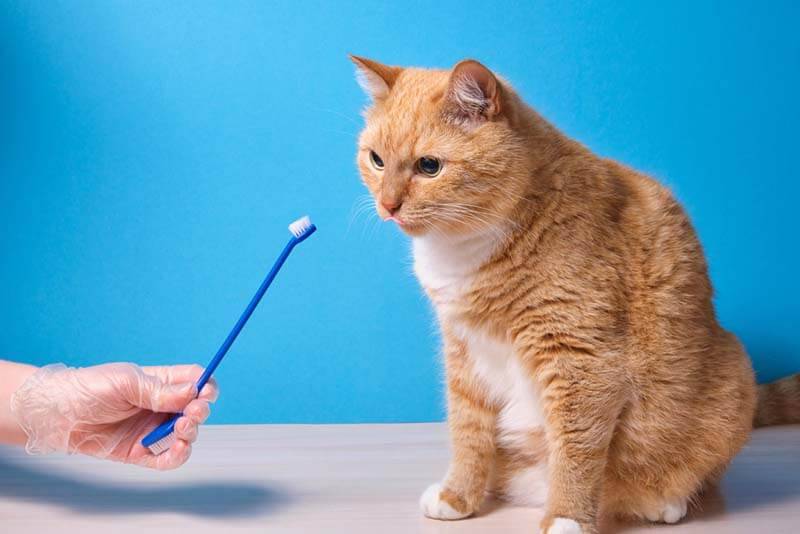
How to brush your cat’s teeth at home
Conventionally, all means for cleaning teeth can be divided into:
Basic: brushes (including fingertips), pastes, gels.
Additional: treats, food, sprays, water additives.
The action of many means is combined. For example, in treats or feeds, in addition to a certain form and composition of granules that allow mechanical cleaning of plaque, often contains additives that prevent its formation. In pastes and gels, in addition to enzymes and plant extracts that reduce the formation of plaque, there are soft abrasive particles that remove it.
It is important to note that any means for cleansing have a preventive focus.
Toothbrushes for cats
To brush your pet’s teeth, it is better to use a special brush for animals. They come in different shapes and sizes.
The area of the cleaning surface itself is small, and the handle should be comfortable to grab and hold.
It is also important to pay attention to the bristles – it is desirable that it is soft and elastic, does not injure the gums, and does not cause discomfort to the pet.
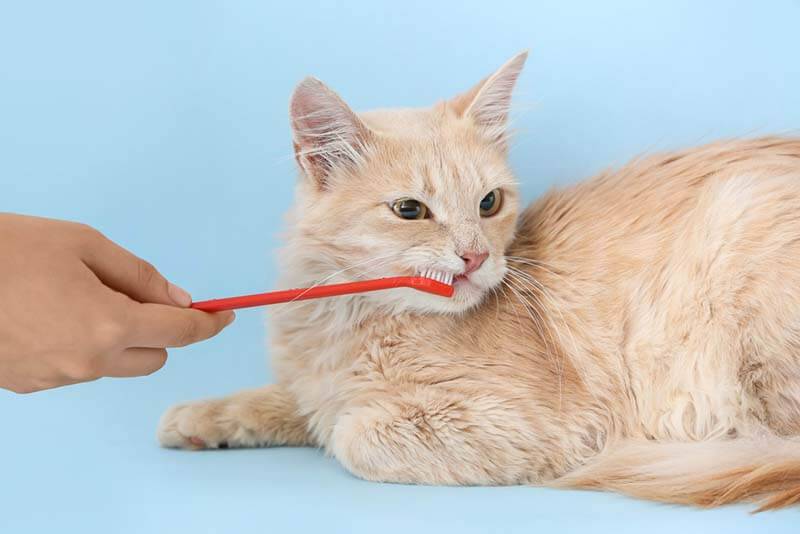
Fingertip
A fingertip can also be a good option for cleaning. In fact, this is a soft brush head made of rubber or silicone, which is worn on the finger. Its disadvantage will be a higher probability of a bite and pet discontent.
You can purchase special fingertips for cats and dogs, or you can use children’s ones. There is no fundamental difference between them.
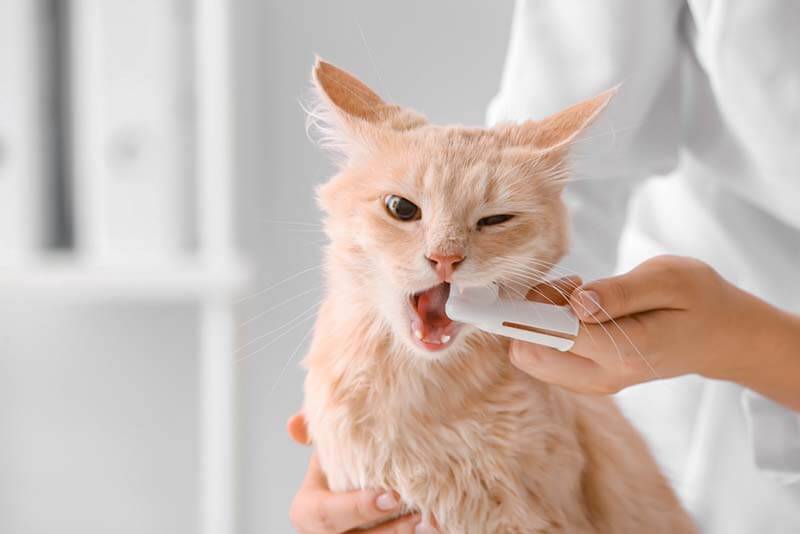
Gels and toothpastes
Gels and pastes can be used without mechanical brushing and together with it. Their action is aimed at preventing the formation of tartar, they may also contain components with antibacterial activity, for example, chlorhexidine, enzymes that break down plaque and mild abrasive substances. Gels and pastes for cats and dogs are safe to swallow.
Cleaning wipes
On sale there are disposable wipes impregnated with a special cleaning compound. They can be used for cats that do not accept brushing. They are also convenient to take with you on trips.
Preparing for cleaning
To start accustoming a pet to brushing teeth, as well as to all other manipulations, should be from early childhood. After each successful episode, it is important to reward the animal with a treat or a game. Never continue if the cat violently resists, hisses, tries to bite. Do not scold your pet, otherwise brushing your teeth will become a frightening procedure for the cat. If the animal gets nervous at any point, stop, calm it down and take a break.
There are several stages of accustoming to brushing a cat’s teeth:
Touches to the mouth: lips, vibrissae (tactile mechanically sensitive hair on the muzzle), chin. In the process, you can offer the cat to lick a treat from your fingers.
Mouth opening. This must be done gently and gently. Do not open the cat’s mouth by pulling the lower jaw by the lip, as it is easy to injure it.
Touching the gums and teeth with a cotton swab or finger. It is better to moisten a cotton swab with water and gently touch the gums and teeth, lifting the cat’s lips.
You can go to the brush and introduce your pet to it. Gradually try to make cleansing movements. Start with the most easily accessible teeth.
After getting used to the brush, you can apply paste or gel on it. First, accustom the cat to its smell and taste: let it smell, lick.
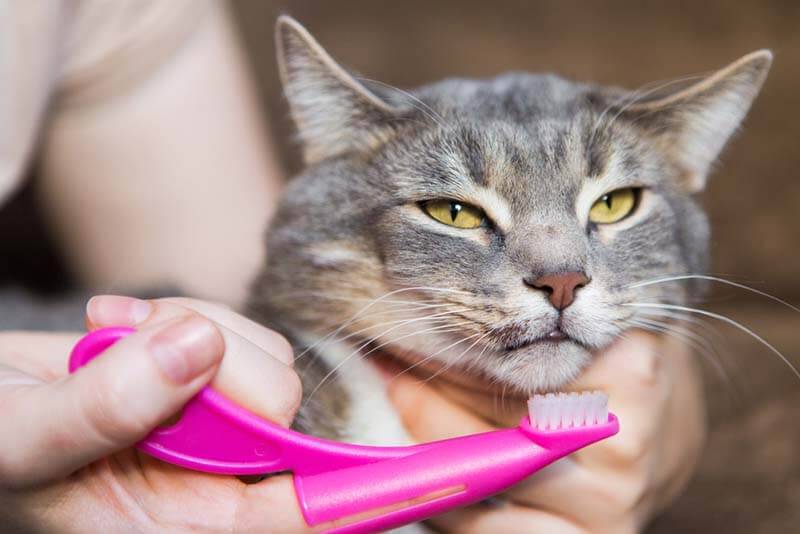
How to properly brush your cat’s teeth – instructions
It is optimal to carry out the procedure with a calm animal and in a quiet environment so that nothing distracts or interferes.
It doesn’t really matter which cat’s teeth you start with, but the most distant and largest teeth – molars and premolars – tend to have more food debris and plaque.
It is more convenient to start with the outer part of the teeth, as it can be well cleaned without opening the pet’s mouth.
Wash your toothbrush thoroughly after brushing.
It is undesirable to continue the procedure if the cat begins to actively resist. It is better to interrupt the brushing than to cause the cat to have unpleasant associations with it.
Do not brush the teeth of a sick cat that is feeling unwell or in pain.
Additional hygiene products
Ideally, oral hygiene should be daily. Alas, in reality, not everyone will be able to brush their cat’s teeth regularly. Especially if this is an adult intractable pet who is completely unwilling to cooperate with you, despite the fact that he was picked up on the street or taken from a shelter.
In such cases, you can use additional tools that will help to cope with plaque.
Oral fluid
Liquids are recommended to be added to drinking water. They help prevent plaque formation and hardening.
Manufacturers claim that such supplements are completely safe, however, it is important to monitor the condition of the pet at the time of vomiting and diarrhea after the introduction of such drugs on an ongoing basis.
Sprays for teeth and oral cavity
Sprays are applied directly to the teeth and sprayed into the oral cavity. Their action is also aimed at reducing the formation of plaque.
It is important to keep in mind that a cat may not like spraying the product directly from the spray, so the best option is to apply it on a cotton pad, Q-tip or a clean napkin.
Treats and foods for dental care
Treats and foods designed for dental care have several nuances. They are easy to use because the animal eats them on its own. The size, shape and texture of the granules will facilitate the mechanical cleaning of the cat’s teeth, and the special ingredients in the composition help prevent the formation of plaque.
It is desirable to use food constantly, but this is not possible in some situations. For example, when an animal, for some reason, will require a specialized diet of a different therapeutic or prophylactic direction.
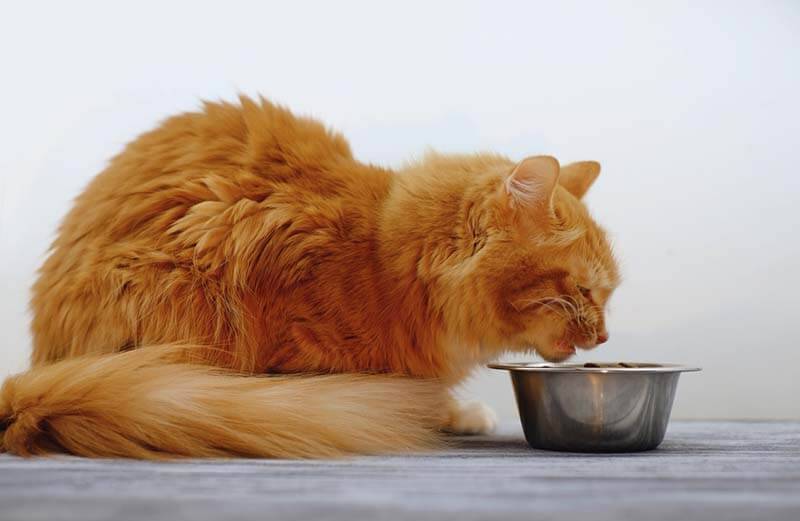
Why not brush your teeth?
There are a lot of myths about caring for teeth, both people and cats. A wide variety of alternative folk remedies are offered.
Most of them can cause serious harm to the pet:
Toothpaste for people. They contain fluoride and many other ingredients that will be dangerous if swallowed. Also, most pastes contain menthol and mint flavor, which is very unpleasant and tasteless for the animal. Even children’s toothpastes are not suitable for brushing your cat’s teeth.
Soda. It will perfectly remove plaque from cups and can be useful for baking, but it is not at all intended for teeth, especially your cat. Will damage enamel and is dangerous if swallowed.
Hydrogen peroxide. It does not have cleansing properties, it can whiten the enamel with long-term use, but at the same time makes the teeth more sensitive.
How often should a cat’s teeth be brushed?
Dental plaque in all animals is formed in different ways. It depends on many different factors: the individual characteristics of the composition of saliva, the texture of the food eaten, bite, health problems, and so on.
The best option would be a daily procedure. Unfortunately, this is not always possible. Therefore, it is quite acceptable to clean the cat’s teeth as often as possible, but the minimum frequency is once a week.
In between, you can use additional products: sprays, treats, and apply gels without the use of mechanical cleaning.
Cleaning in veterinary clinics
If plaque has compressed, become dense, hard and has already turned into tartar, it will not work to deal with it at home. Removal of tartar is a hygienic sanitation of the oral cavity, which is carried out in a veterinary clinic with ultrasound using a special apparatus. After removing the stone, the surface of the teeth is polished to reduce its further formation.
It is possible to qualitatively clean the teeth of a cat with ultrasound only under general anesthesia. This procedure is unpleasant and is accompanied by a loud resonating sound and vibration. It is impossible to remove only part of the tartar because dental deposits are also under the gum, from where they also need to be removed.
The frequency of such cleanings will depend on what kind of oral care the animal receives at home, as well as on its individual characteristics and health status.
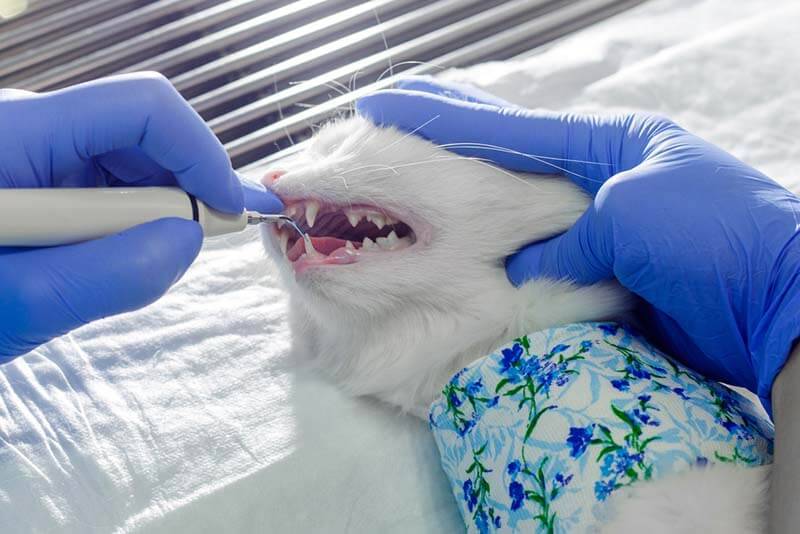
How to care for your cat’s teeth
Oral care, first of all, consists in regular cleaning of the cat’s teeth. During the cleaning process, the owner has the opportunity to examine not only the teeth themselves, but also the pet’s oral cavity for inflammation, and this is an important nuance. In addition to brushing your teeth, you can advise the following:
Timely and regular vaccination. Some diseases, such as feline calcivirosis, may play a role in the development of chronic oral diseases, such as gingivostomatitis (an infection caused by the herpes simplex virus).
Lack of access to house plants. Cats may chew the leaves and stems of houseplants, including those that can damage the mouth mechanically, such as thorns. Some plants are irritating and burn the oral mucosa. In addition, certain types of domestic and bouquet flowers are dangerous for the life of a cat due to their high toxicity.
Do not allow bones in the cat’s diet. This applies to both raw and boiled bones, including fish bones. They can injure the oral cavity, gums, get stuck in the sky, between the teeth, the owner does not always notice this right away. Bones can cause obstruction (Latin for “obstruction”) and injury to the esophagus and gastrointestinal tract.
Visit your doctor annually for a routine checkup. The specialist can notice problems in the oral cavity that you have not paid attention to, as well as assess whether it is time to brush the cat’s teeth with ultrasound. In young cats, such examinations are usually combined with vaccination, and in mature and elderly animals, with a routine health examination.
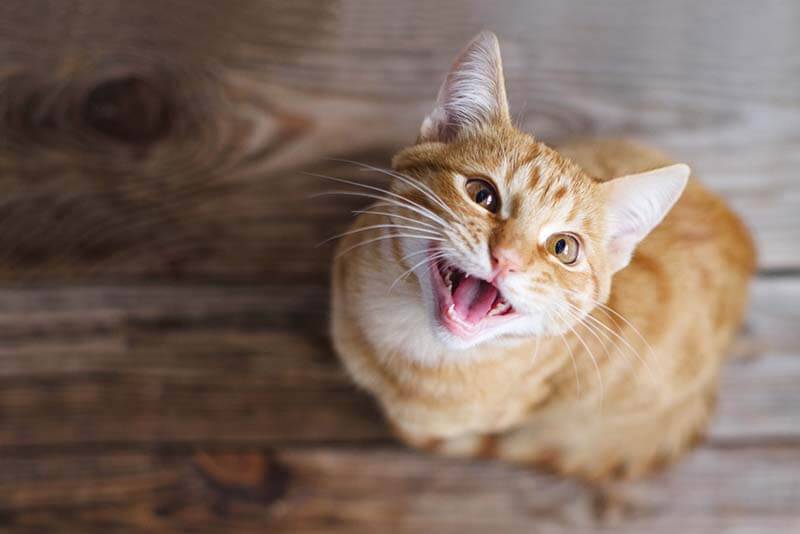
When should you see a doctor?
In the absence of regular care, a cat will sooner or later develop plaque. From soft and loose, it eventually becomes dense and hard, which gradually leads to inflammation of the gums.
Unfortunately, diseases of the oral cavity can also appear in those cats whose owners pay regular attention to their teeth.
Gingivitis develops in cats regardless of age, including kittens (juvenile gingivitis). This is inflammation of the gums, a reaction to plaque and the bacteria that it contains.
Periodontitis – a more extensive and deep inflammatory process that affects not only the gums, but also the periodontium – the tissues surrounding the teeth. It can be associated with both local causes – chronic gingivitis, tartar, and systemic diseases – diabetes mellitus, chronic kidney disease. Periodontitis often leads to tooth loss.
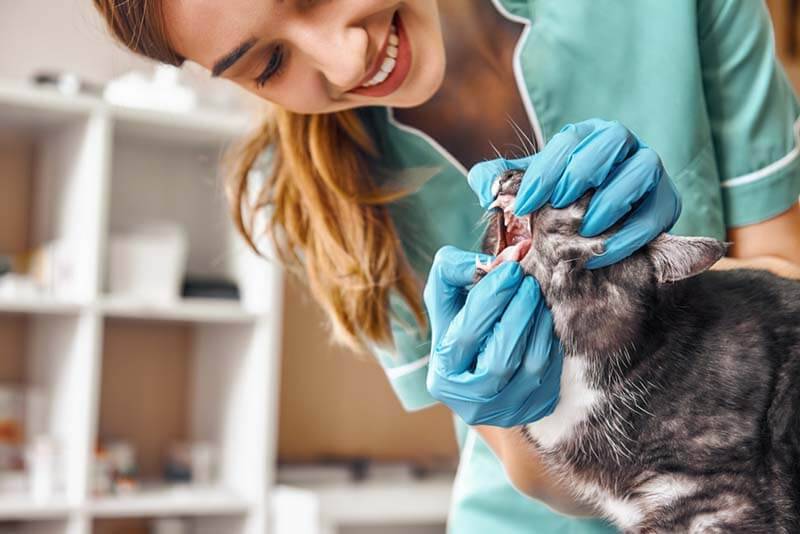
Gingivostomatitis – This is a chronic disease of the oral cavity, in which not only the gums are affected, but also the entire oral mucosa. This is an extremely painful condition, the causes of which are an excessive immune response.
Gingivitis and periodontitis are characterized by the following symptoms:
Redness and swelling of the gums.
Bleeding gums.
Soreness in the mouth: chewing on one side, refusal of dry food, swallowing fragments of food.
Bad breath.
Increased salivation.
Also, with periodontitis, the shakiness of the teeth, up to their loss, will be noted. But with significant dental deposits, this may not be noticed immediately.
Gingivostomatitis leads to all of the above symptoms with the difference that they will be more pronounced, and the inflammation spreads to the entire oral mucosa, leading to its swelling, redness, bleeding.
Gingivostomatitis and gingivitis can develop in cats of any age, but periodontitis is more common in middle-aged and older cats.
Maine Coons have a predisposition to develop gingivostomatitis.
Other symptoms of oral diseases that should alert the owner:
Changing the color of teeth. If the tooth becomes pink, gray or brown, it is not normal.
Tooth fracture or loss of a permanent tooth.
Swelling of the jaw, cheeks, under the eye, or chin.
Ulcers, redness and formations in the oral cavity – on the gums, cheeks, soft palate, tongue, etc.
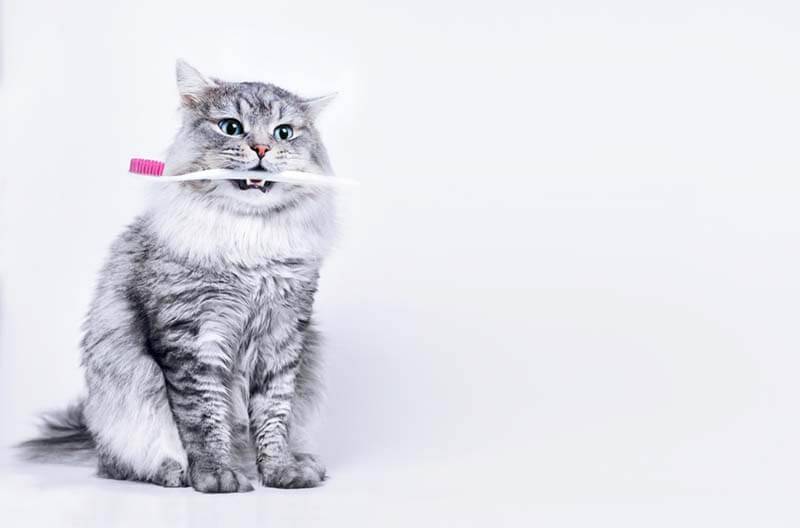
Brushing your cat’s teeth is essential
Every cat needs a teeth cleaning. It should be regular, ideally daily.
It is important to accustom to brushing from childhood, the process of accustoming should be soft and gradual.
For cleaning, you need to use special brushes for animals, they are more convenient. You can use fingertips or special napkins.
For cleansing, you can use special pastes and gels for cats and dogs.
Do not use human toothpaste, soda, peroxide.
Additional tools will be sprays, liquids for teeth, as well as cleansing treats and food.
All home care products are aimed at removing soft plaque and preventing it.
Soft plaque gradually hardens and turns into tartar.
Tartar is removed only in the clinic using ultrasonic cleaning.
Answers to frequently asked questions
Sources:
S. Tutt, D. Deeprose, D. Crosley. Dentistry for dogs and cats, 2015
Edited by Gary D. Norsworthy. The feline patient, fifth edition, (Cat patient, fifth edition), 2018
Shigabutdinova N.A. Periodontitis. // Journal “Veterinary Petersburg”, No. 4, 2013 https://spbvet.info/zhurnaly/4-2013/parodontit/.



